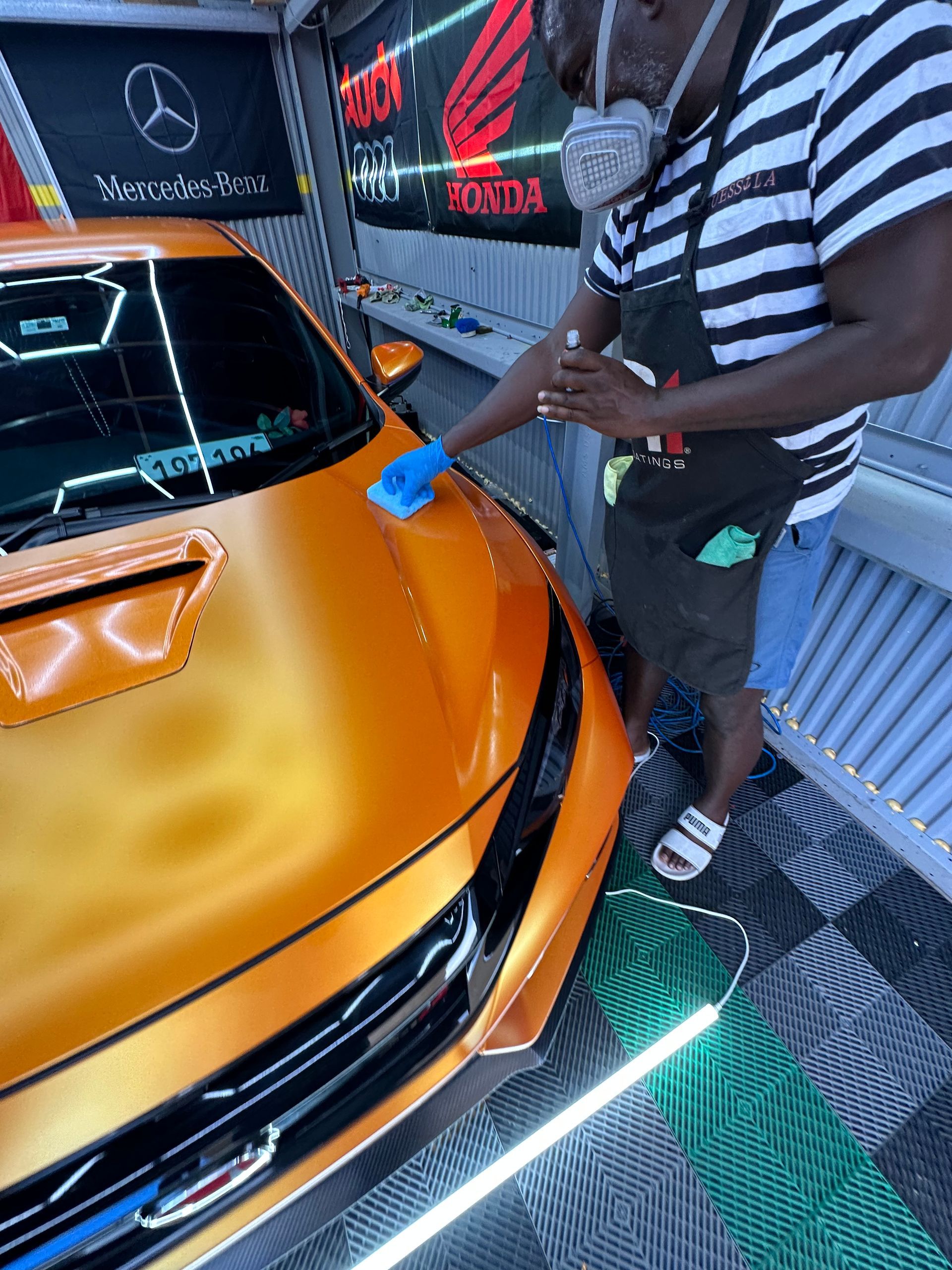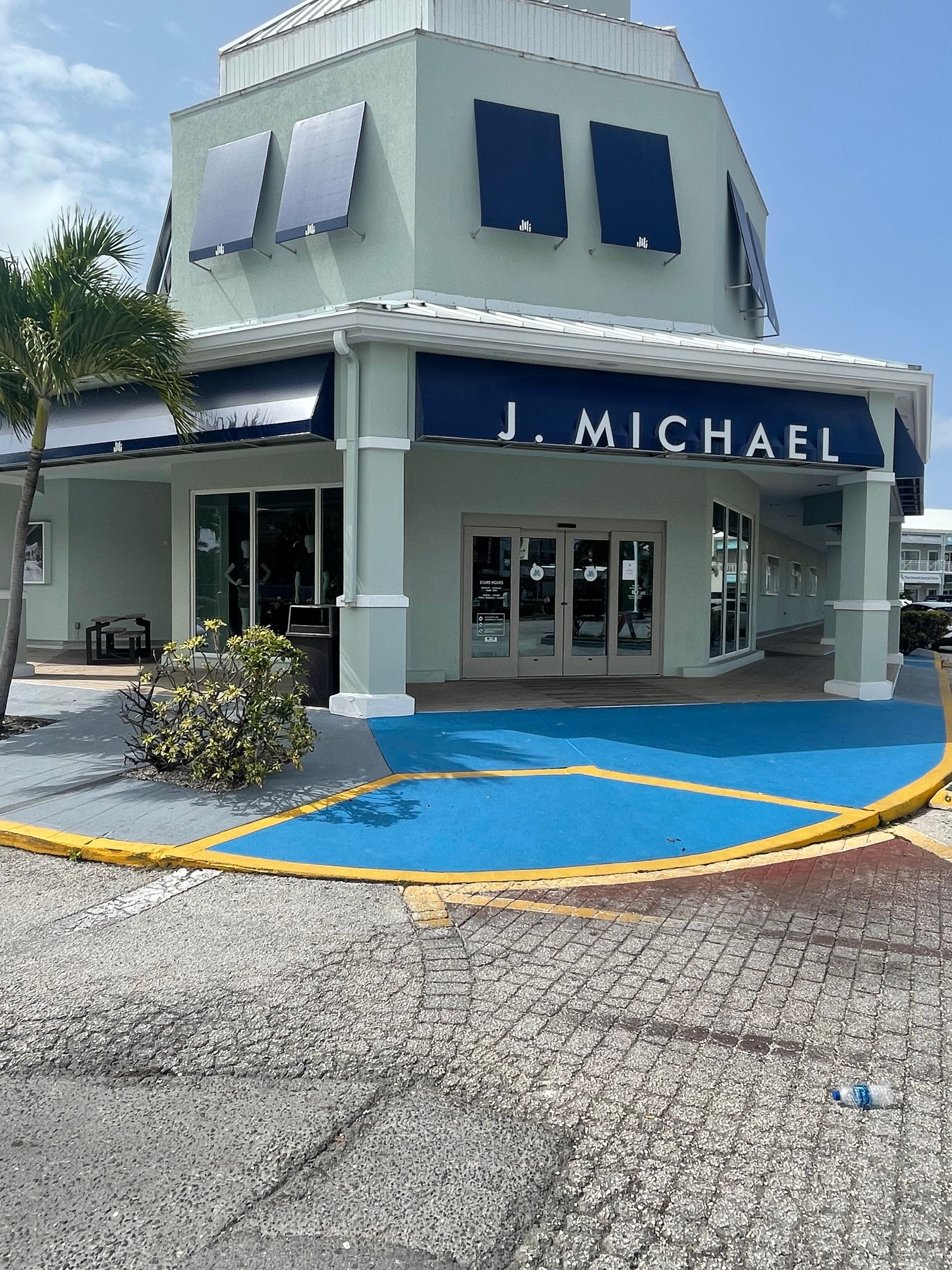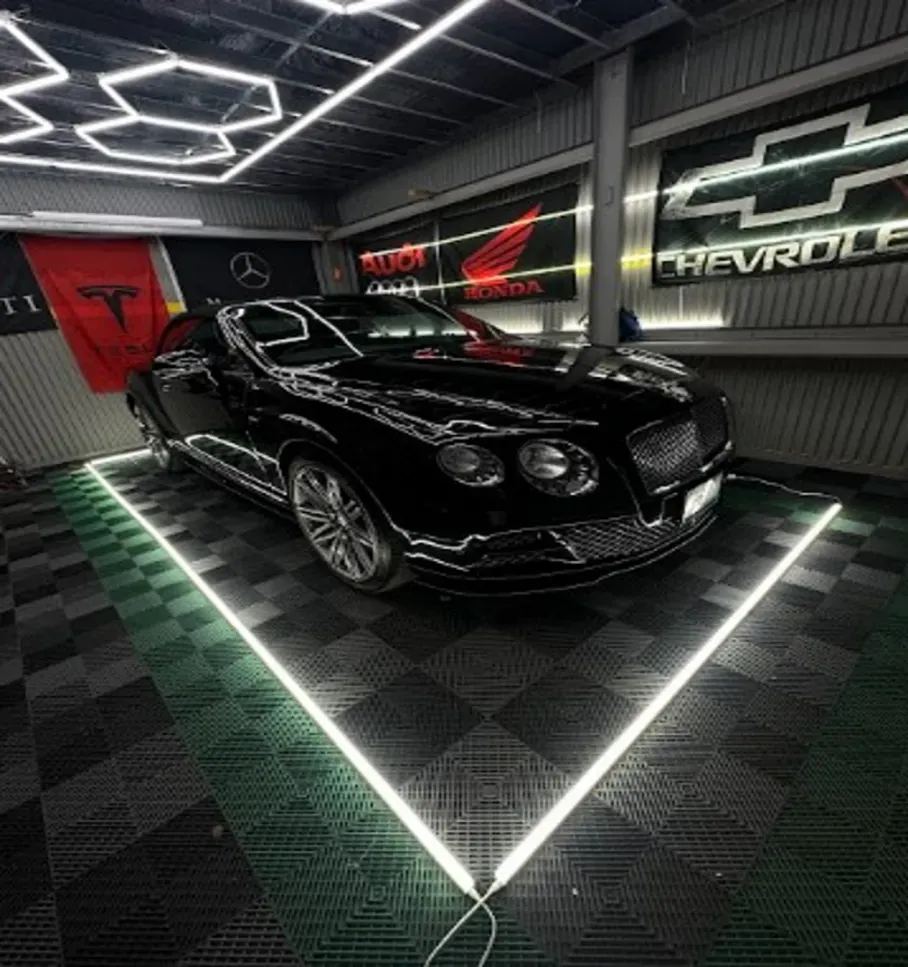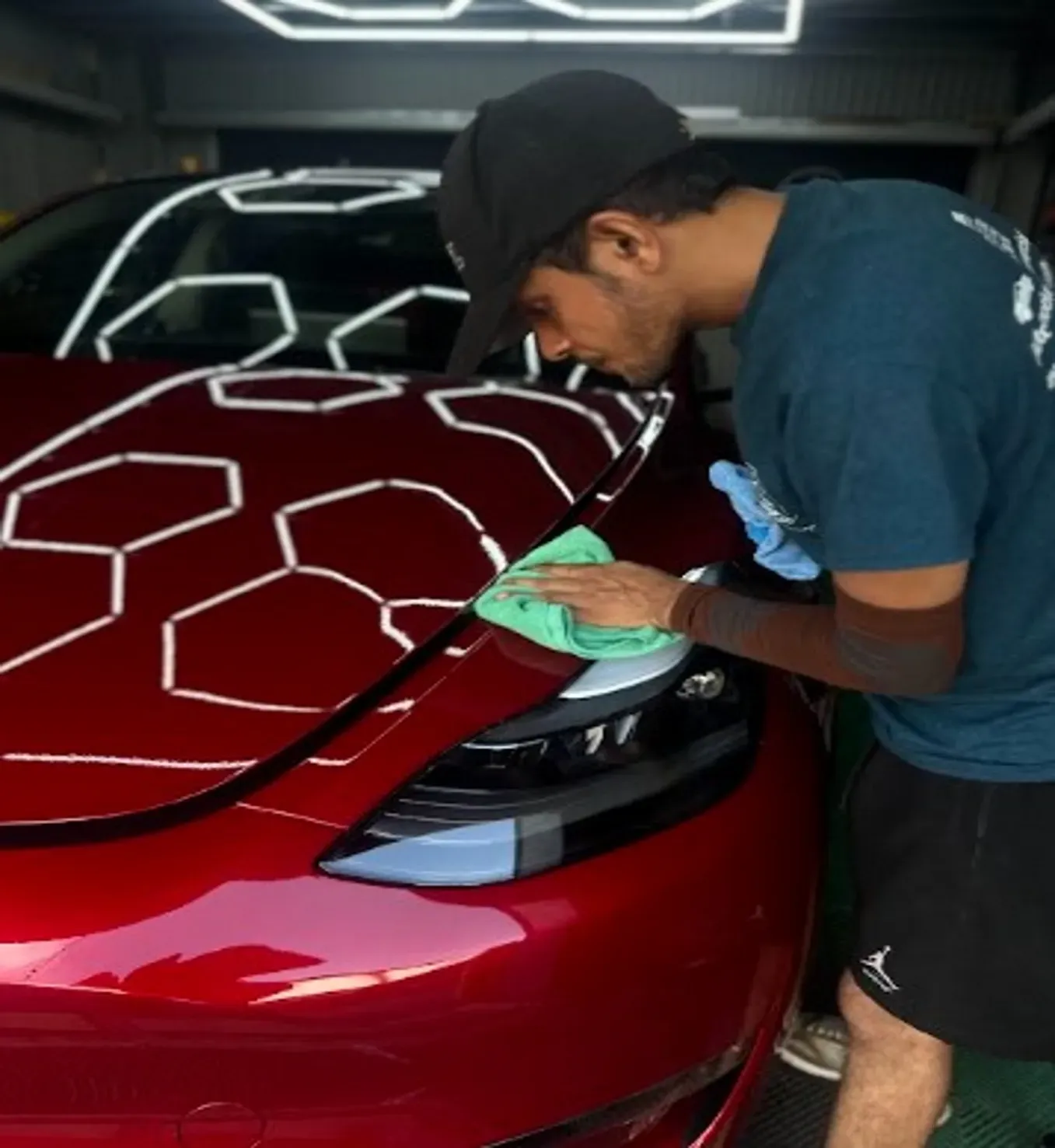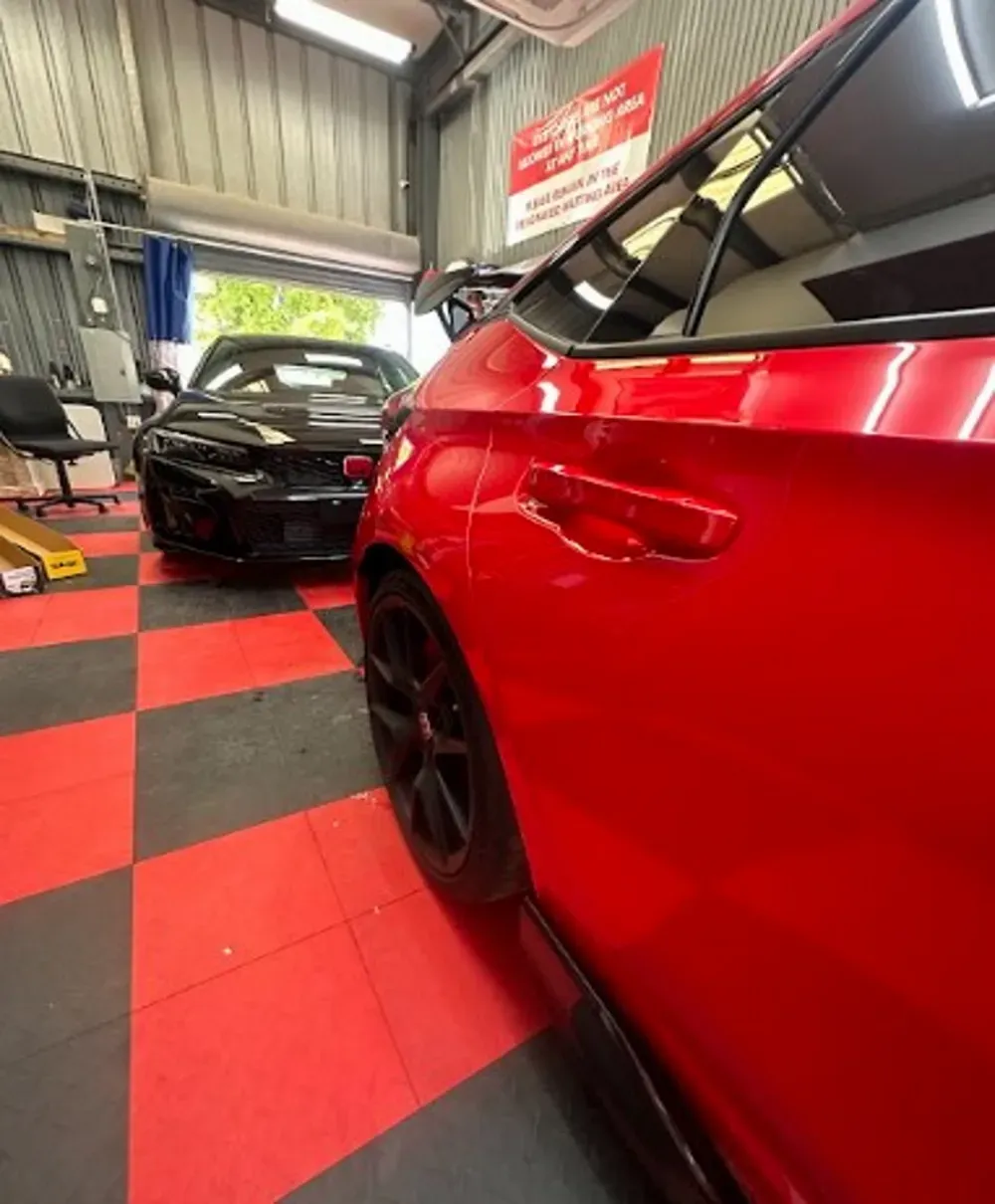Ever felt that wave of heat when you got into your parked car on a sunny day or squinted through glaring sunlight while driving? Not to mention the long-term damage that UV rays can do to your skin and car interiors. These common annoyances are why many turn to car window tinting—a practical yet stylish solution offering relief and protection.
Our comprehensive guide covers the benefits of car window tinting, such as UV protection, heat reduction, and privacy. Additionally, it dives into the different types of window tint films available, including infrared film for maximum visibility and carbon film for UV and heat blocking. The guide also explains the importance of adhering to local regulations when tinting vehicle windows and emphasizes the advantages of professional installation for optimal results.
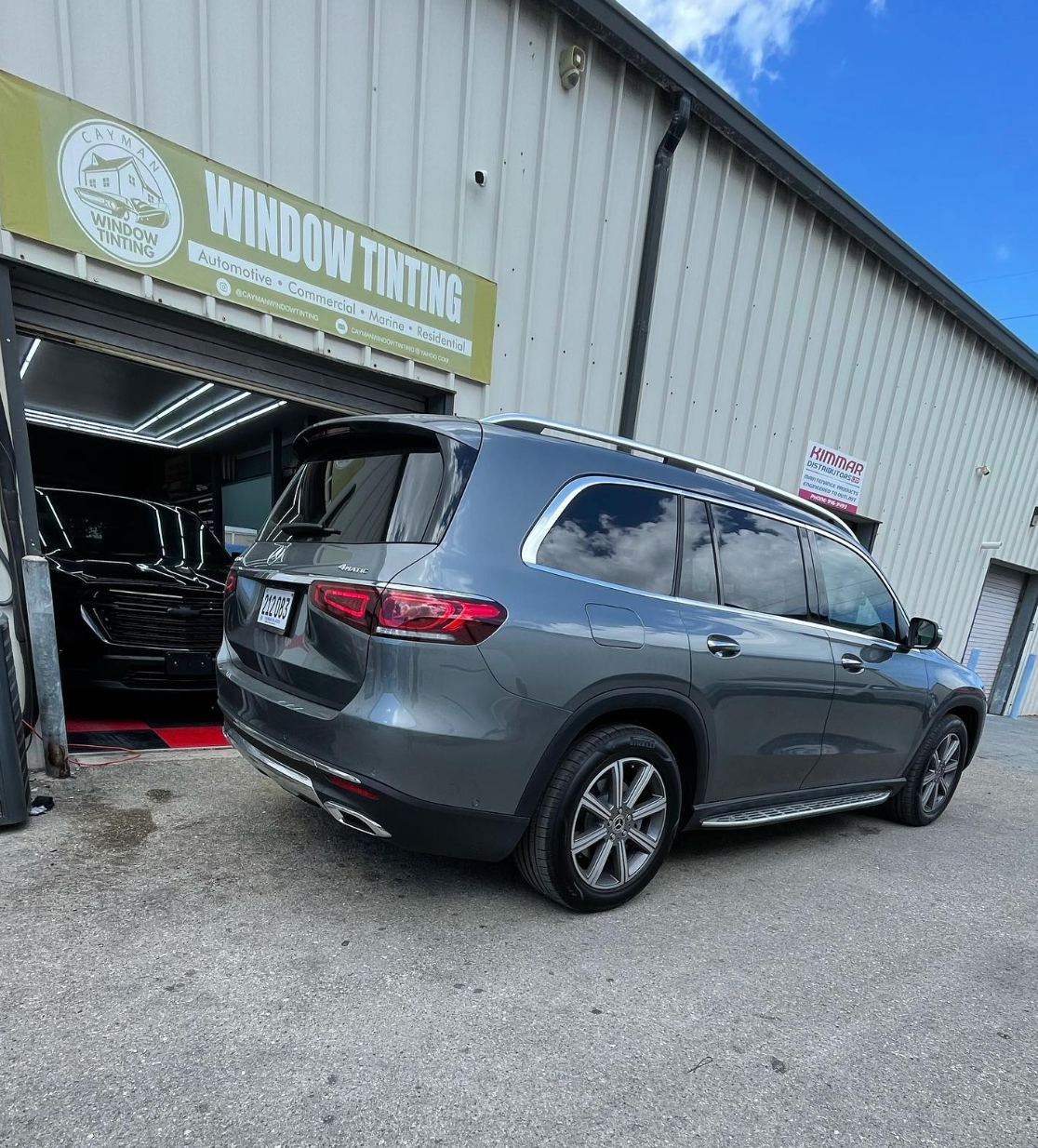
What is Car Window Tinting?
Car window tinting isn't just about making your car look cool - it serves a range of functional purposes as well. This process involves applying a thin film to the car windows to darken them, providing several benefits that go beyond aesthetics. The film can add a layer of privacy to your car's interior, block harmful UV radiation, and help control the temperature inside your vehicle. But that's not all; it also shields the interior from fading and protects you and your passengers from the sun's damaging effects.
One of the most significant advantages of window tinting is its ability to block UV rays. Exposure to UV rays can lead to skin damage and significantly increase the risk of skin cancer. By reducing UV penetration, car window tinting acts as a shield against these harmful rays, safeguarding both you and your passengers during long drives.
Tint films come in various shades and materials, each designed with a specific purpose in mind. Some provide maximum visibility while blocking UV rays and heat (infrared film), some provide a sleek look with sun protection but may interfere with cell phone signals (metallic film), and still others block UV rays and heat without affecting electronic devices (carbon film).
For those residing in sunny areas like the Cayman Islands, where the sun's intensity is high for a large part of the year, effective window tinting can make a noticeable difference in maintaining comfortable temperatures inside the vehicle. It's like having an added layer of protection against the scorching heat.
Additionally, window tinting helps enhance security by providing increased privacy for the occupants of the vehicle. Whether it’s parked in a crowded area or you simply want more safeguards for your belongings inside, tinted windows offer an added level of seclusion.
Learn more about our expert tinting services at Cayman Window Tinting.
Key Benefits of Installing Window Tinting In Car
Car window tinting isn't just a visual upgrade; it also offers substantial practical advantages. Let's cover some of the benefits:
UV Protection
When you're out on a sunny day, UV rays can be quite harmful. They can not only damage your skin but also cause the upholstery in your car to fade over time. Tinted windows can block up to 99% of these harmful ultraviolet (UV) rays, creating a shield of protection for you and your passengers.
Research shows that prolonged exposure to UV radiation can have detrimental effects on skin health, leading to premature aging and an increased risk of skin cancer.
So, not only does it keep your car cool and comfy, but it also protects you from potential sun damage, which is especially important if you spend a lot of time driving during the day.
Increased Privacy and Security
Imagine having the peace of mind that comes with knowing your valuable items in the car are not clearly visible from the outside. This added layer of privacy makes it more difficult for prying eyes and potential thieves to see what's inside. As a result, darkened windows provide more privacy to passengers and can serve as a deterrent to theft.
Temperature Control
Imagine that you enter your car on a sizzling hot day, and it feels like an oven. Thankfully, through reducing heat buildup, window tinting significantly helps with maintaining a cooler interior. This has multiple benefits - it provides enhanced comfort during drives and reduces the load on the car's air conditioning system.
By blocking infrared radiation (IR), window tinting helps mitigate heat from the sun, creating a more comfortable environment inside your vehicle.
Enhanced Aesthetics
Let's not forget that beyond its practical benefits, car window tinting offers an aesthetic advantage too. A professionally applied tint can give your car a sleek, modern look that stands out on the road.
Imagine cruising down the street with darkened windows that complement the overall appearance of your vehicle, giving it a stylish and sophisticated appeal.
By understanding these key benefits, we gain insight into how window tinting is not just an accessory but an essential addition to any vehicle. From protecting against harmful UV rays to improving privacy and security, the advantages of window tinting go beyond mere aesthetics.
Different Types of Tint Films
There are plenty of options available when it comes to window tinting. Each type of film offers distinct characteristics, catering to varying needs and preferences. Let's explore some of the most common types of tint films:
Dyed Window Film
Dyed window film utilizes dye to block sunlight, making it the most budget-friendly option. It provides a matte finish and enhances privacy and aesthetics. However, it is less effective at blocking UV rays compared to other types.
This film type is popular for adding a touch of style to vehicles while offering a level of privacy for passengers and belongings inside. The dyed film gives windows a sleek appearance, reducing glare without impacting visibility during the day or night. Additionally, it can greatly reduce the fading of upholstery and interior surfaces by screening out a good amount of sunlight.
Metalized Film
Metalized window film incorporates metallic particles to reflect sunlight, providing excellent UV and heat rejection. The metal components in the film create a protective layer that can reflect harmful UV rays away from the vehicle or building. While it is extremely effective in reducing heat buildup inside cars and buildings, it's essential to note that metalized film can interfere with cell phone and GPS signals due to its metallic properties.
Carbon Film
Carbon window film is designed to provide significant UV and heat filtering without causing interference with electronic devices such as cell phones, GPS, or radios. It also provides a sleek matte finish that improves the overall appearance of the vehicle or property.
One key advantage of carbon film is its ability to maintain optimal clarity without compromising performance. It reduces glare and enhances comfort for occupants by effectively blocking out infrared heat, all while maintaining optimal signal transparency for electronic devices.
Ceramic Film
Ceramic window films represent the highest-end option in terms of both performance and durability. These non-conductive films offer superior UV blocking capabilities, reducing heat buildup while maintaining optimal visibility. Additionally, ceramic films are scratch-resistant and provide long-lasting protection for vehicles and properties.
The advanced technology used in ceramic window films allows for maximum solar energy rejection without affecting wireless signals or creating signal interference issues commonly found with other film types. Due to their durable nature, these films are an excellent investment for long-term use, providing both exceptional solar control benefits and enhanced aesthetic appeal.
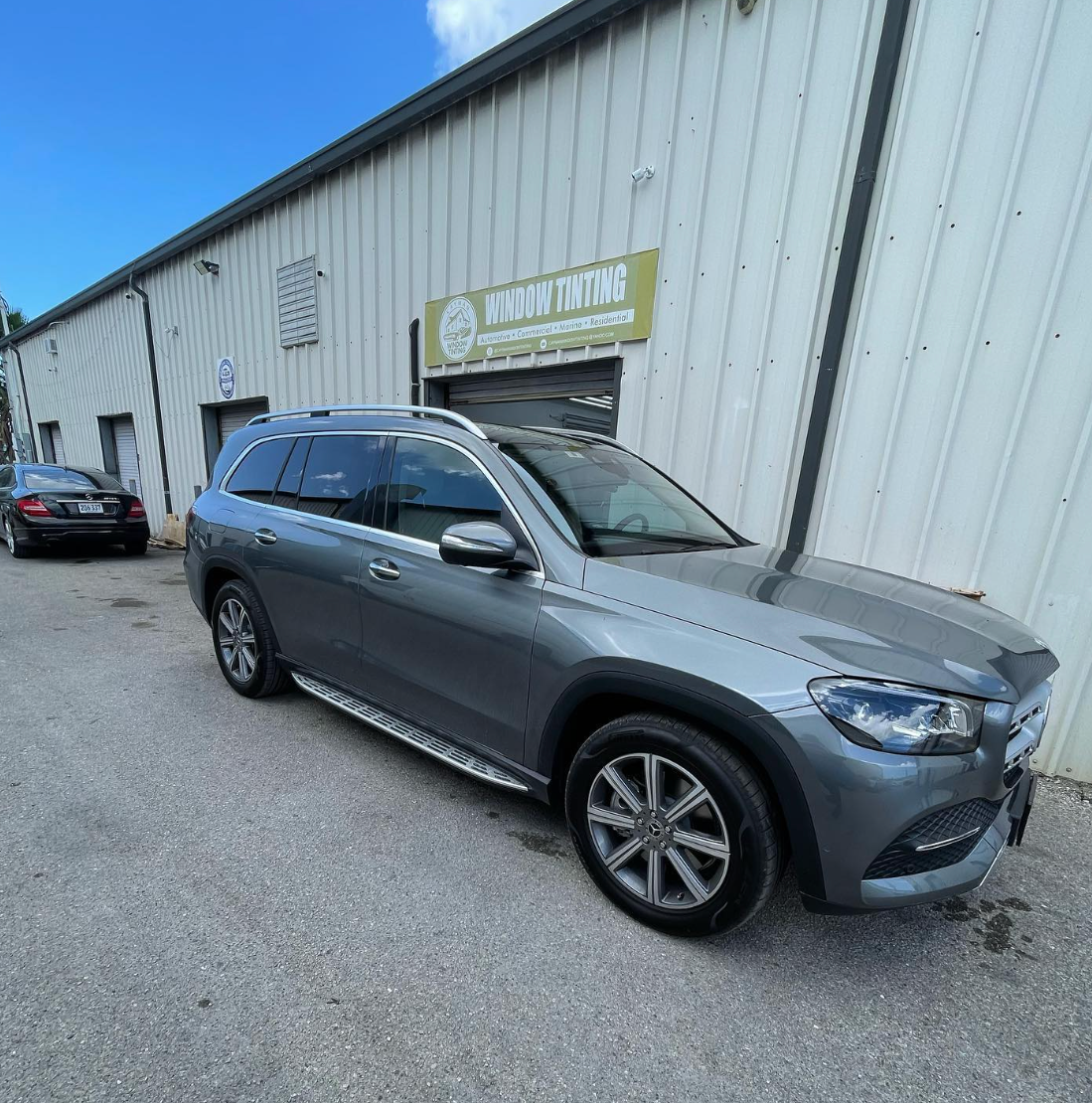
Legal Regulations to Know
When it comes to car window tinting, legality is not just a mere suggestion; it's an important consideration to avoid trouble with the law. These laws regulate the darkness and reflectivity of window tints, ensuring that vehicles maintain a level of transparency for safety. Understanding the legal requirements for your specific location is vital. In some areas, the front side windows must allow more light to pass through than the rear windows.
Here are some common aspects covered by window tinting laws:
- Tint Darkness: Laws specify the maximum darkness allowed for window tints, typically measured by visible light transmission (VLT) percentage.
- Reflectivity: Some regions may have restrictions on how reflective the window tints can be.
- Tint Placement: Regulations often outline which windows can be tinted and how dark they can be.
- Exemptions: Certain vehicle types or purposes may be exempt from these regulations, like medical exemptions or certain commercial vehicles.
Disregarding these laws can result in fines and penalties. However, compliance isn't just about avoiding trouble; it's also about ensuring safety on the roads. Proper visibility plays a critical role in preventing accidents, so adhering to these regulations isn't just a legal matter but one of public safety as well.
At Cayman Window Tinting, we prioritize adherence to all relevant legal standards, ensuring that our installations comply with local regulations while providing optimal performance and aesthetics.
Step-by-Step Installation Process
Installing window tint may appear daunting, but with the right instructions, it is a manageable DIY project. Here is the step by step window tinting installation process!
Step I - Preparing the Windows
Before touching the tint, it's crucial to prepare the windows properly. Start by cleaning the windows meticulously using a solution of water and a small amount of no-tear baby shampoo. This helps remove any dirt, grease, or adhesive residues, ensuring a clean surface for the film to adhere to and minimizing potential imperfections in the final result.
A good cleaning ensures that your window tint adheres seamlessly without any bumps or lumps, which can be caused by leftover dirt or grime. Similar to painting a wall, preparation is key to achieving a professional finish!
Step II - Measuring and Cutting the Film
Once the windows are clean and dry, it's time to measure and cut the film. First, measure each window accurately, adding a small margin around all edges for minor adjustments during installation. When cutting the film, use a sharp utility knife and a clean cutting surface to ensure precise cuts. Remember, measure twice, cut once!
Take your time with this step to avoid waste due to improper measurements or cutting. The last thing you want is to end up short on film when you're halfway through the installation.
Step III - Applying the Film
With the precut film ready, carefully peel off the protective layer and apply it to the interior side of the window. Starting from the top, gently position the film in place, gradually smoothing it down as you move towards the bottom. Aim to avoid air bubbles and wrinkles during this process.
Step IV - Removing Air Bubbles
After placing the film on the window, it's vital to remove any trapped air bubbles for a flawless finish. Using a soft-edged squeegee, firmly press out any bubbles towards the edges of the window.
If there are stubborn bubbles that won't budge, carefully lift that area of the film and reapply it, smoothing out any wrinkles or bubbles as you go.
Step V - Trimming Excess Film
To complete the process, trim any excess film from the edges using a sharp precision knife. A steady hand will help achieve clean, straight edges while ensuring that no part of your tint obstructs your view or appears untidy from outside.
By following these steps methodically and taking your time at each stage of installation, you can achieve professional results without enlisting costly professional services. It's an investment of time that pays dividends in terms of cost savings and personal satisfaction with your work!
Cost Considerations and Tips
Window tinting isn't just about enhancing the look of your car—it's also an investment in the comfort and safety of both you and your vehicle. It's essential to understand the factors influencing the price and how to ensure you're getting the best value for your money.
The price of window tinting isn't set in stone; it varies based on several key factors. The type of film you choose plays a significant role in determining the cost, with ceramic and infrared films generally being more expensive due to their advanced heat rejection capabilities. Additionally, the size and shape of your vehicle will impact the overall cost, with larger vehicles requiring more tint film. Lastly, installer expertise and the quality of service can affect pricing—opting for a skilled professional ensures precision application and may come with a warranty.
When considering window tinting costs, Cayman Window Tinting offers comprehensive quotes to explore various options. Getting a detailed quote from professionals allows you to better understand the overall cost while comparing different film types and services. Seeking professional advice helps align your specific needs with your budget.
While the cost is important, it's crucial to ensure that the chosen tint film meets your needs and conforms to local regulations. This way, you won't only enhance the aesthetics of your vehicle but also ensure that it complies with legal requirements related to light transmission levels.
Understanding the variables affecting window tinting costs empowers you to make an informed decision when choosing the right tint for your vehicle. By prioritizing value over mere pricing, you can invest in quality that serves both aesthetic and practical purposes, providing long-term benefits for both you and your vehicle.
For expert advice and comprehensive quotes on window tinting options,
contact Cayman Window Tinting at (345) 939-7343. Make an informed decision and invest in the long-term comfort, safety, and aesthetics of your vehicle.
Cayman Window Tinting
Taking Your Vehicle to the Next Level
Headquartered in Georgetown, Cayman Islands and founded in 2017, Cayman Window Tinting is the leading window tint installers and vehicle paint enhancement and protection experts in our unique area of the world! In addition to enhancing the aesthetic appearance and functional protection of all vehicle makes and models, we also offer UV-resistant window tinting to boats, all vehicles, homes, and commercial buildings alike. Each of our window tinting applications available at Cayman Window Tinting are specifically tailored to each customer’s requirements for unrivaled interior protection, no matter if it is a vehicle or property.
QUICK LINKS
OUR LOCATION
Sparky's Dr, 23 Lancaster Crescent Grand Cayman KY1, 1009, Cayman Islands
CONNECT WITH US
PHONE: (345) 939-7343
Cayman Window Tinting was designed by the team at Detailers Roadmap, a platform developed for detailing operators across the globe.
All Rights Reserved | 8bitcreative, LLC | Cayman Window Tinting


